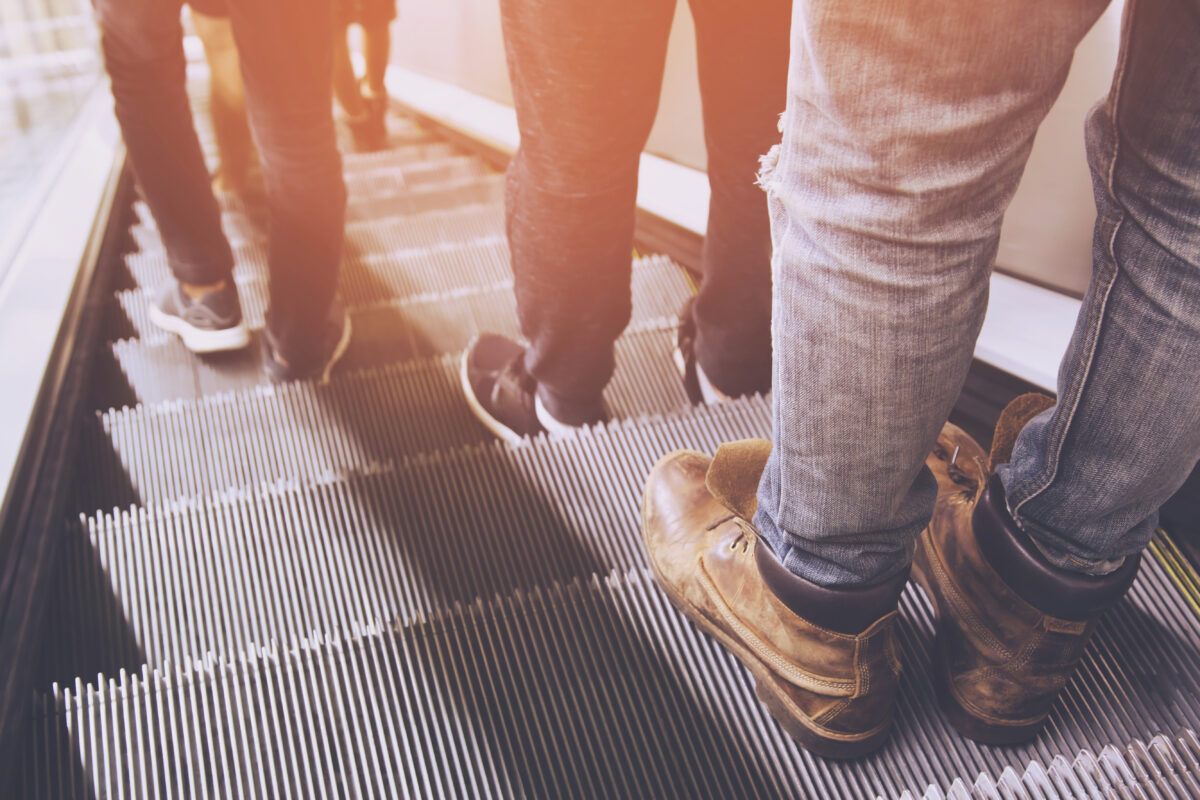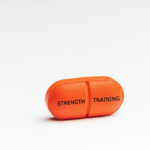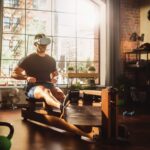If my mum was describing me to her friends, she would probably say something like, “Oh Cath, my oldest – well, she’s the fitness fanatic.” I would never correct her – too late for that. But something about that phrase no longer serves me. I have taken it upon myself to rebrand, to evolve, if only for my own internal dialogue. I like to think of myself as a wellness fanatic and being an avid exerciser is one of the pillars of being well. In fact, my wellness is my primary exercise motivation.
In a previous blog, How to Start Working Out, we talked about the importance of having compelling reasons to get moving. Now that we’re moving, let’s dig into some of the tremendous benefits – that go well beyond outward “physical fitness” – to keep us motivated to work out.
My goal: to help you build your motivation muscle and really believe and understand that there really is no such thing as a bad workout – EVER! There might be fewer calories burned, or slightly lower heart rates, or reduced duration. But BAD? Not ever! It’s all an investment, a step in the direction of living better, longer. To quote Cleveland Clinic’s Dr. Mark Hyman, “Exercise is a wonder drug with crazy benefits and virtually no adverse side effects.”
Motivation to Move…Picture an Escalator
Speaking of steps, let me share an analogy that I like to use to explain the compounding benefits of exercise.
Picture an escalator on its way down. That’s the passage of time. When we move our bodies, when we exercise, we are “actively aging.” We are walking up the escalator that is on its way down. Exercise gives us the ability to stay where we are on the escalator and even make some progress fighting against the downward trajectory. Conversely, “inactive aging,” not moving, not exercising, is standing on a single step and letting the escalator take us down. And because of inactivity, that escalator is steep and fast.
This steep and fast decline is occurring because our bodies are hardwired for movement, which used to be essential for evading predators and finding food. We hunted, we gathered, and we became very effective at regular exercise and rest cycles. Our modern-day lifestyles mean that we now have an abundance of food and have simultaneously engineered movement out of our lives. But because movement and exercise are essential to our bodies’ biology, this level of inactivity is sending the wrong signal to our body. It is telling our bodies to go ahead and decay rather than grow.
But the remarkable thing about the human body is that we can flip anytime to growth mode. At any age, we can reverse the negative effects of an overly sedentary lifestyle. We can start walking up that down escalator. Or, more immediately (and practically), we can get up and walk around the block and our bodies will respond!
What’s Happening (Way) Below the Surface
So much “fitness noise” exclusively focuses on aesthetics as a reason to move – what’s happening on the outside – when what’s happening on the inside is so much more profound! And we’re about to go deep into the inside, even bypassing life-changing results like better sleep, improved self-confidence, and reduced anxiety. We’re going cellular-level deep to find motivation to move in the illness-fighting benefits of exercise.
Exercise enhances immune function. Exercise boosts the immune system by maximizing the body’s ability to take in and effectively use oxygen, increasing the activity of virus-killing cells. Another way to look at it…the increased blood flow caused by exercise increases circulation of the immune cells so that they roam around the body at a higher rate and in higher numbers.
Exercise improves gut health and function! Maybe it doesn’t sound as sexy as having better biceps…but we have a crucial symbiotic relationship with the little critters that live in our gut! This bacterium supports a whole host of bodily functions and our body, in turn, supports the health and growth of the microorganisms. The gut microbiome affects the body from birth by controlling the digestion of food, immune system, central nervous system, and other bodily processes. And exercise has been shown to improve the flourishing and diversity of the gut microbiome.
Exercise boosts both the number and the function of our mitochondria. Mitochondria are the energy factories in our cells and mitochondrial dysfunction is associated with premature aging, type 2 diabetes, and cardiovascular disease. Exercise has been shown to dramatically improve mitochondrial function. In fact, a paper titled Exercise and Mitochondrial Health stated:, “To this point, exercise remains the most potent behavioral therapeutic approach for the improvement of mitochondrial health, not only in muscle, but potentially also in other tissues.”
Exercise balances blood sugar and insulin. Exercise makes our bodies more sensitive to insulin (the hormone that allows the cells in the body to convert blood sugar for energy) as well as helps control blood sugar levels and lowers our risk of cardiovascular disease.
Exercise reduces inflammation. Dr. Mark Hyman uses the phrase “inflammaging” to describe the age-related increase in pro-inflammatory markers in the blood and in the tissues, which is a very strong risk factor for a myriad of disease states that range from cancer to heart disease to dementia. Exercise is one of the best ways to reduce or minimize inflammation in the body.
Exercise increases telomere length. A telomere, put very (very) simply, is found at both ends of each chromosome and is responsible for protecting our genome from going rogue or doing the wrong thing. Our genome contains all the information that we need to grow and develop, but as we age the telomeres get shorter, eventually so much so that it affects our health and lifespan. In a way they are like a biological clock. Exercise has been shown to reduce the pace of aging by increasing telomere length!
Exercise boosts detoxification and circulation. Exercise has a positive impact on the function of your lymphatic system – one of our body’s key lines of defense against toxins. The lymphatic vessels and lymph nodes are responsible for sending lymph fluid around the body to maintain healthy immunity and protect against harmful substances.
Exercise improves mental detoxing. The runner’s high is common knowledge, but any exercise delivers the incredible brain boost we get with the release of the happy hormones – endorphins – that flood our body while we move, simultaneously detoxing the brain of stressors.
Exercise improves brain health. It is now well-known that physical activity reduces the risk of cognitive decline, including dementia. Studies have shown that cognitive decline can be as much as twice as common in the inactive versus the active!
Exercise reduces cancer risk. Many of the benefits mentioned already are directly linked to cancer, but it is worth stating that exercise reduces the incidence of specific cancers, like bladder, breast, colon, endometrium (innermost lining layer of the uterus), esophagus, kidney, lung, and stomach.
We Love an Ulterior Motive…ation
Almost everything we do under the “fitness” umbrella at MOSSA has an ulterior motive. As in…we are about so much more than physical fitness, because we know people need more than aesthetics as motivation to work out. We are about brain health, Movement Health, social fitness, wellness. We passionately believe that moving our bodies is the key to reducing and reversing chronological aging and increasing our health span and active lifespan.
How can we keep you motivated to move for reasons far beyond the physical? I get it; “Increasing your telomere length” might not be the thing that gets you to put on your shoes when your motivation muscle is waning. But I hope there is so much more reflected in your exercise motivation mirror than a flat stomach or toned biceps. Exercise and movement are wonder drugs…wonder drugs whose only side effects are a better, deeply healthier, and more enjoyable life.



 More than Muscles: Benefits of Strength Training
More than Muscles: Benefits of Strength Training New Member Onboarding: Over-Welcoming or Overwhelming?
New Member Onboarding: Over-Welcoming or Overwhelming? Team vs. Technology and the Future of Fitness
Team vs. Technology and the Future of Fitness Setting Goals for Group Fitness
Setting Goals for Group Fitness Does Exercise Have to be Boring and Bitter?
Does Exercise Have to be Boring and Bitter?